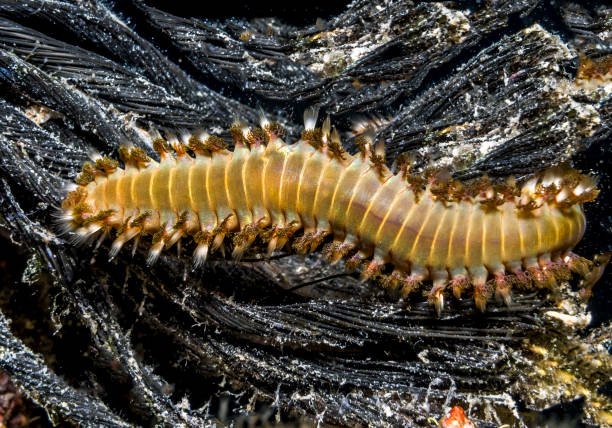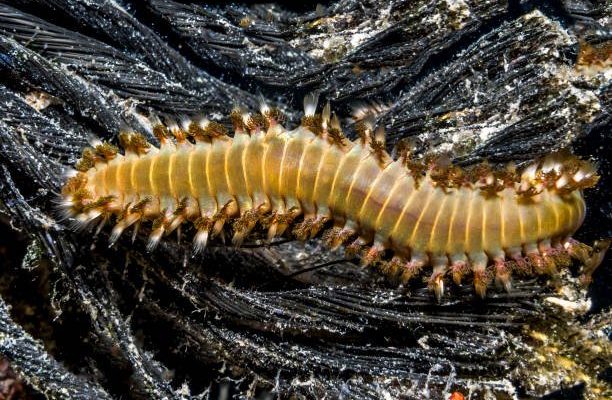
You might be wondering how these creatures fit into your aquarium or what size they can reach. Generally, home setups vary, and the size of bristle worms can depend on several factors. While some hobbyists see just a few inches, others might find specimens stretching to impressive lengths. Let’s dig deeper into this topic and explore the maximum size bristle worms reach in home setups, their impact, and how to manage them effectively.
What Are Bristle Worms?
Bristle worms are marine polychaetes that belong to the family Polychaeta. They’re often found lurking in sandy substrates or among the rockwork in aquariums. These worms come in various species, and they can be beneficial to your tank. They’re scavengers, meaning they feed on decaying organic matter, leftover food, and detritus. This cleaning habit can help maintain water quality and prevent toxic buildup in your tank.
Most bristle worms are harmless, but their rapid growth can sometimes surprise new aquarists. A healthy bristle worm can grow up to 10 inches or even more, depending on the species and the conditions of your aquarium. Imagine having a tiny creature that can grow to the size of your forearm! This size can make a difference in how they interact with other inhabitants of your tank.
Maximum Size of Bristle Worms
So, how big can these bristle worms actually get? The maximum size of bristle worms can vary significantly based on their species. Some common ones found in home aquariums include the Eunice aphroditois and the Hermodice carunculata. The Eunice species, for example, can grow up to an astonishing 3 feet in the wild. However, in a typical home aquarium, their growth is usually limited due to space constraints and food supply.
In general, most aquarium bristle worms max out between 4 to 10 inches. A few species might exceed this, especially if they have ample room and plenty of food. If you’re managing a smaller tank, this is something you definitely want to keep an eye on. Having a worm that grows unnaturally large can lead to overcrowding or competition for resources, affecting your fish and coral.
Factors Influencing Size
The size of bristle worms in your home setup can be influenced by several factors. Let’s break them down:
- Diet: Healthy bristle worms thrive on a balanced diet. If they have access to decomposing food or detritus, they may grow larger. However, too much food can also lead to population explosions, making management trickier.
- Space: In a spacious tank, bristle worms can stretch out and grow. Conversely, in cramped quarters, their growth may slow down. So, the setup of your aquarium plays a critical role in their development.
- Water Quality: Bristle worms thrive in stable, clean environments. Poor water quality can stunt their growth and lead to die-offs. Regular testing and maintenance of water parameters are crucial for your tank’s ecosystem.
- Species Variation: Even within the bristle worm family, species have different growth potentials. Knowing which species you have can help you anticipate their maximum size.
Understanding these factors can help you not only manage your bristle worm population but also create a thriving habitat for your aquatic life.
Managing Bristle Worm Populations
If you’re noticing more bristle worms than you’re comfortable with, don’t panic! There are several ways to manage their populations without disrupting your entire ecosystem. Here are some strategies:
1. Regular Maintenance: Keeping your tank clean and well-maintained can limit the food supply bristle worms rely on, which in turn can help control their numbers.
2. Manual Removal: For smaller infestations, consider removing oversized bristle worms by hand (wear gloves!). This direct approach can help manage their size without affecting other tank inhabitants.
3. Predators: Some fish and invertebrates love to snack on bristle worms. For example, certain wrasses and some types of crabs will help keep their numbers in check.
4. Limit Feeding: Overfeeding can lead to a spike in worm populations. Make sure to only feed your fish what they can consume in a few minutes, reducing leftover food that encourages bristle worm growth.
Managing bristle worms might seem daunting at first, but with some proper techniques, you can create a balanced ecosystem in your home aquarium.
Benefits of Bristle Worms
Despite their sometimes intimidating size, bristle worms offer several benefits to your aquarium:
– Detritivores: They help break down organic matter and waste, keeping your tank cleaner and healthier.
– Aeration: By burrowing into the substrate, bristle worms assist in aerating the sand or soil, allowing beneficial bacteria to thrive.
– Biodiversity: Having a diverse community of creatures in your aquarium, including bristle worms, can contribute to a more balanced ecosystem.
In a way, you can think of bristle worms as the unsung heroes of your underwater world. They work behind the scenes to ensure everything runs smoothly, even if they aren’t always the most glamorous residents.
Understanding the maximum size bristle worms can reach in home setups is essential for any aquarium enthusiast. While they can grow surprisingly large—sometimes up to several inches or more—it’s mostly manageable with the right care and attention. By keeping a close eye on their population and using effective management strategies, you can enjoy the benefits bristle worms provide without feeling overwhelmed.
Remember, the key to a thriving aquarium is balance. Bristle worms may be small, but they play a big role in your tank’s health. So next time you spot one of these wriggly creatures, you might just appreciate them a little more!

